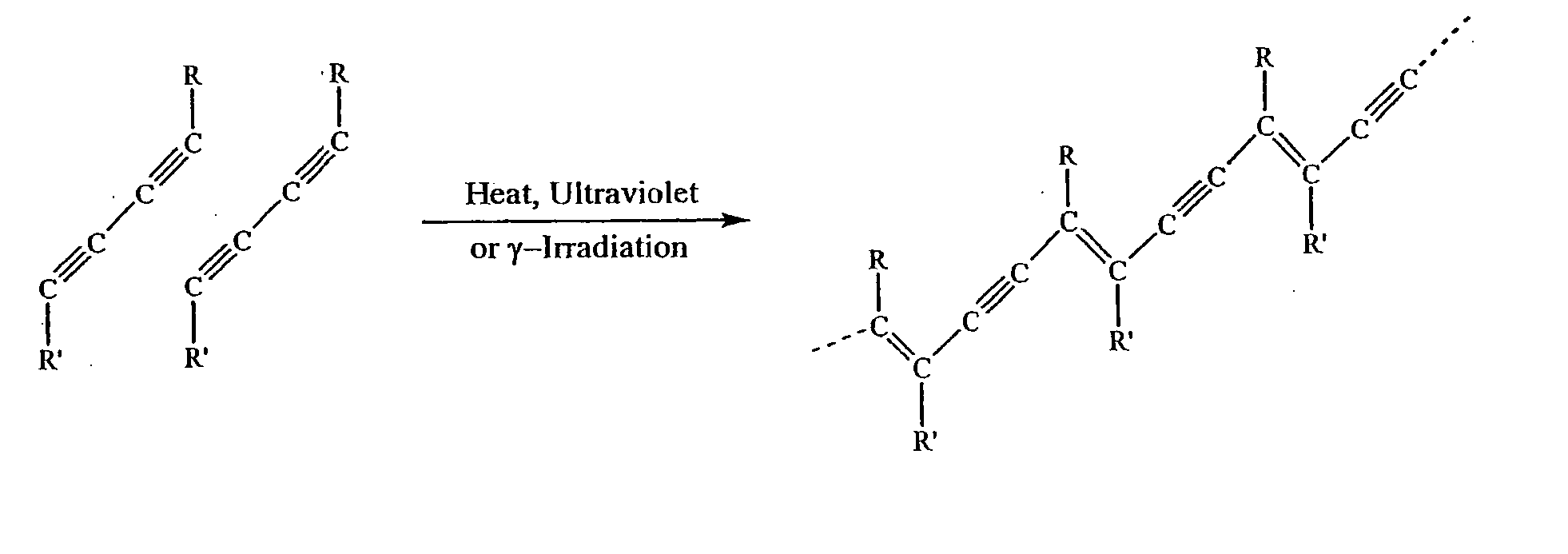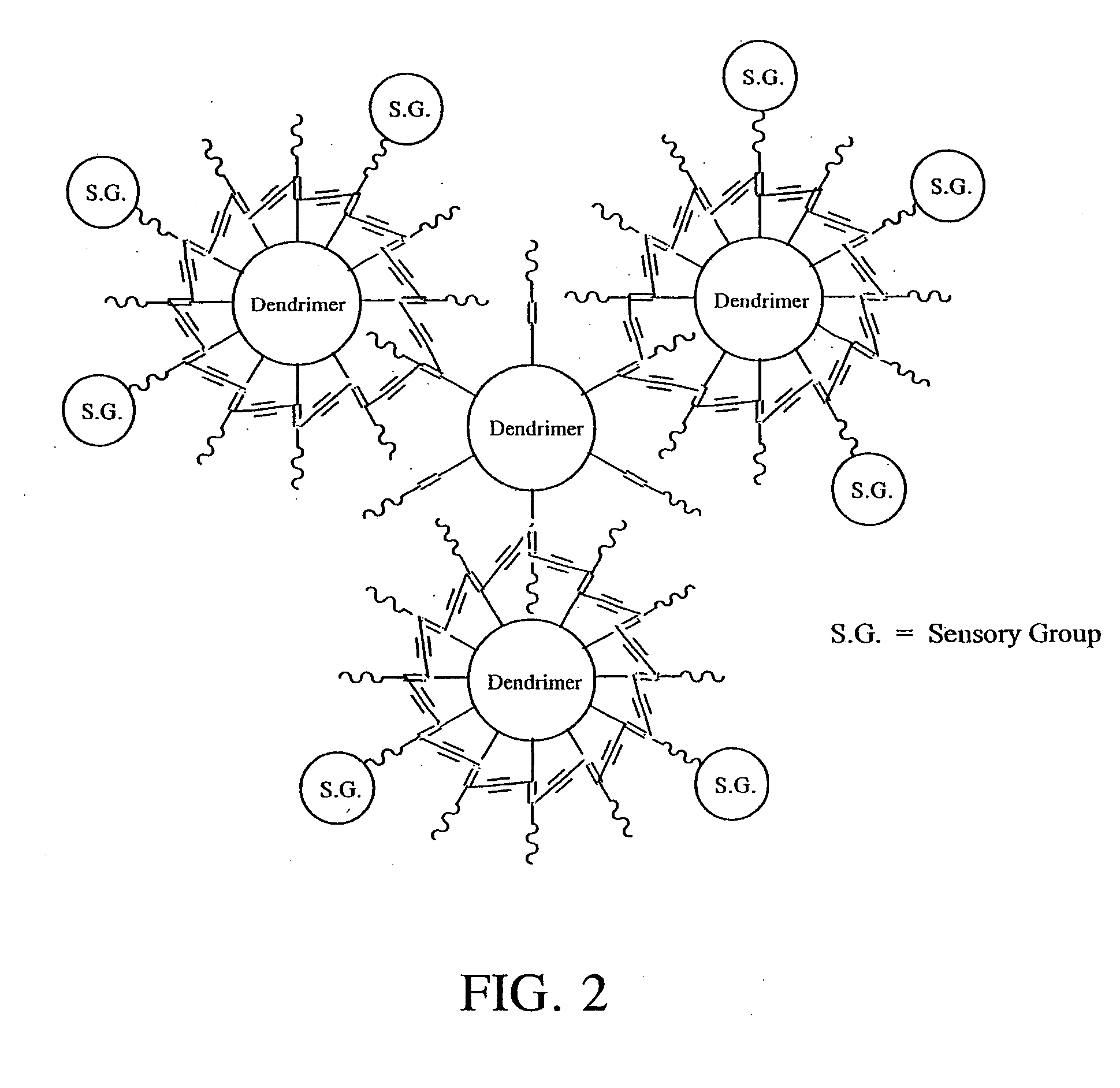Solid-state colorimetric biosensors comprised of dendritic polymer networks
a colorimetric biosensor and dendrite polymer technology, applied in the field of colorimetric biosensors, can solve the problems of inability to inability to easily carry or adapt to portable use, and the reported pda-vehicle system has the following limitations
- Summary
- Abstract
- Description
- Claims
- Application Information
AI Technical Summary
Problems solved by technology
Method used
Image
Examples
example 1
[0046] Sequential attachment of biotin and 10,12-pentacosadiynoic acid to the amine end groups of a generation 4 PAMAM dendrimer that contains a statistical mixture of amine and hydroxyl end groups (52% NH2 & 48% OH).
[0047] 0.39 g of a 42.55 weight % solution of generation 4 PAMAM dendrimer containing 52% amine and 48% hydroxyl end groups (0.16 g, 0.37 mmol of —NH2 groups) was slowly added to a stirred mixture of N-succinimidyl-biotin (0.060 g, 0.18 mmol) in 10 ml methanol. The reaction mixture was stirred for 3 days. A solution of N-succinimidyl-10,12-pentacosadiynoic acid (0.108 g, 0.23 mmol) in 5 ml methylene chloride was subsequently added to the reaction mixture, which was then stirred for an additional three days to ensure complete reaction with all remaining amine end groups. The reaction mixture was concentrated on a rotary evaporator and purified by ultrafiltration in methanol. The solvent was removed on a rotary evaporator, and the obtained modified dendrimer was dried by...
example 2
Detection of Avidin [Neogen Experiment, Jul. 26, 2002]
[0048] A dilute methanol solution of the biotin / 10,12-pentacosadiynoic acid / G4 PAMAM dendrimer of Example 1 was spotted on filter paper (5×10 μL). After each application the solvent was evaporated. The filter paper was irradiated with a UV lamp (245 nm, 6 W) from 20 cm distance for 30 to 60 seconds, resulting in a violet-blue colored spot. 10 μL of a 1 mg / mL solution of streptavidin was added to the blue spot, which caused the color to shift from violet-blue to faint red.
[0049] As a simple control experiment, pure water was added to the blue spot on the filter paper, which resulted in no observable change in color.
[0050] In a related control experiment, the dilute methanol solution of the biotin / 10,12-pentacosadiynoic acid / G4 PAMAM dendrimer was spotted on filter paper (5×10 μL) and dried after each application. 10 μL of a 1 mg / mL solution of streptavidin was then added to the spot followed by drying and irradiation with the UV...
PUM
| Property | Measurement | Unit |
|---|---|---|
| weight % | aaaaa | aaaaa |
| weight % | aaaaa | aaaaa |
| weight % | aaaaa | aaaaa |
Abstract
Description
Claims
Application Information
 Login to View More
Login to View More - R&D
- Intellectual Property
- Life Sciences
- Materials
- Tech Scout
- Unparalleled Data Quality
- Higher Quality Content
- 60% Fewer Hallucinations
Browse by: Latest US Patents, China's latest patents, Technical Efficacy Thesaurus, Application Domain, Technology Topic, Popular Technical Reports.
© 2025 PatSnap. All rights reserved.Legal|Privacy policy|Modern Slavery Act Transparency Statement|Sitemap|About US| Contact US: help@patsnap.com



